The Role of Oxidative Stress in Alcoholic Fatty Liver Disease: A Systematic Review and Meta-Analysis of Preclinical Studies
- PMID: 38674865
- PMCID: PMC11055095
- DOI: 10.3390/nu16081174
The Role of Oxidative Stress in Alcoholic Fatty Liver Disease: A Systematic Review and Meta-Analysis of Preclinical Studies
Abstract
Alcoholic Fatty Liver Disease (AFLD) is characterized by the accumulation of lipids in liver cells owing to the metabolism of ethanol. This process leads to a decrease in the NAD+/NADH ratio and the generation of reactive oxygen species. A systematic review and meta-analysis were conducted to investigate the role of oxidative stress in AFLD. A total of 201 eligible manuscripts were included, which revealed that animals with AFLD exhibited elevated expression of CYP2E1, decreased enzymatic activity of antioxidant enzymes, and reduced levels of the transcription factor Nrf2, which plays a pivotal role in the synthesis of antioxidant enzymes. Furthermore, animals with AFLD exhibited increased levels of lipid peroxidation markers and carbonylated proteins, collectively contributing to a weakened antioxidant defense and increased oxidative damage. The liver damage in AFLD was supported by significantly higher activity of alanine and aspartate aminotransferase enzymes. Moreover, animals with AFLD had increased levels of triacylglycerol in the serum and liver, likely due to reduced fatty acid metabolism caused by decreased PPAR-α expression, which is responsible for fatty acid oxidation, and increased expression of SREBP-1c, which is involved in fatty acid synthesis. With regard to inflammation, animals with AFLD exhibited elevated levels of pro-inflammatory cytokines, including TNF-a, IL-1β, and IL-6. The heightened oxidative stress, along with inflammation, led to an upregulation of cell death markers, such as caspase-3, and an increased Bax/Bcl-2 ratio. Overall, the findings of the review and meta-analysis indicate that ethanol metabolism reduces important markers of antioxidant defense while increasing inflammatory and apoptotic markers, thereby contributing to the development of AFLD.
Keywords: alcoholic steatosis; antioxidant enzymes; apoptosis; inflammation; lipid peroxidation.
Conflict of interest statement
The authors declare no conflicts of interest.
Figures
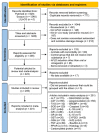
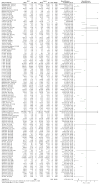
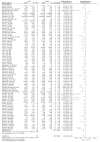
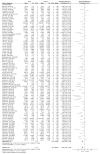


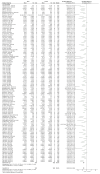



Similar articles
-
Polygala fallax Hemsl polysaccharides alleviated alcoholic fatty liver disease by modifying lipid metabolism via AMPK.Int J Biol Macromol. 2024 Nov;279(Pt 4):135565. doi: 10.1016/j.ijbiomac.2024.135565. Epub 2024 Sep 11. Int J Biol Macromol. 2024. PMID: 39270893
-
Protective effects of E Se tea extracts against alcoholic fatty liver disease induced by high fat/alcohol diet: In vivo biological evaluation and molecular docking study.Phytomedicine. 2022 Jul;101:154113. doi: 10.1016/j.phymed.2022.154113. Epub 2022 Apr 25. Phytomedicine. 2022. PMID: 35490493
-
Astragaloside alleviates alcoholic fatty liver disease by suppressing oxidative stress.Kaohsiung J Med Sci. 2021 Aug;37(8):718-729. doi: 10.1002/kjm2.12390. Epub 2021 May 11. Kaohsiung J Med Sci. 2021. PMID: 33973356 Free PMC article.
-
Role of CYP2E1 in Mitochondrial Dysfunction and Hepatic Injury by Alcohol and Non-Alcoholic Substances.Curr Mol Pharmacol. 2017;10(3):207-225. doi: 10.2174/1874467208666150817111114. Curr Mol Pharmacol. 2017. PMID: 26278393 Free PMC article. Review.
-
n-3 Polyunsaturated fatty acids for the management of alcoholic liver disease: A critical review.Crit Rev Food Sci Nutr. 2019;59(sup1):S116-S129. doi: 10.1080/10408398.2018.1544542. Epub 2018 Dec 22. Crit Rev Food Sci Nutr. 2019. PMID: 30580553 Review.
Cited by
-
Alpinetin Exhibits Antioxidant and Anti-Inflammatory Effects in C57BL/6 Mice with Alcoholic Liver Disease Induced by the Lieber-DeCarli Ethanol Liquid Diet.Int J Mol Sci. 2024 Dec 26;26(1):86. doi: 10.3390/ijms26010086. Int J Mol Sci. 2024. PMID: 39795945 Free PMC article.
-
Chronic alcohol intake disrupts cytochrome P450 enzyme activity in alcoholic fatty liver disease: insights into metabolic alterations and therapeutic targets.Front Chem. 2025 May 13;13:1509785. doi: 10.3389/fchem.2025.1509785. eCollection 2025. Front Chem. 2025. PMID: 40433307 Free PMC article.
-
Exploring new drug treatment targets for immune related bone diseases using a multi omics joint analysis strategy.Sci Rep. 2025 Mar 27;15(1):10618. doi: 10.1038/s41598-025-94053-7. Sci Rep. 2025. PMID: 40148470 Free PMC article.
-
Exploring Varied Treatment Strategies for Metabolic Dysfunction-Associated Steatotic Liver Disease (MASLD).Life (Basel). 2024 Jul 3;14(7):844. doi: 10.3390/life14070844. Life (Basel). 2024. PMID: 39063598 Free PMC article. Review.
-
Emerging role of natural bioactive compounds in navigating the future of liver disease.ILIVER. 2024 Dec 13;4(1):100140. doi: 10.1016/j.iliver.2024.100140. eCollection 2025 Mar. ILIVER. 2024. PMID: 40636787 Free PMC article. Review.
References
-
- World Health Organization—WHO No Level of Alcohol Consumption Is Safe for Our Health. [(accessed on 10 February 2023)]. Available online: https://www.who.int/europe/news/item/04-01-2023-no-level-of-alcohol-cons....
-
- Salete-Granado D., Carbonell C., Puertas-Miranda D., Vega-Rodríguez V.J., García-Macia M., Herrero A.B., Marcos M. Autophagy, Oxidative Stress, and Alcoholic Liver Disease: A Systematic Review and Potential Clinical Applications. Antioxidants. 2023;12:1425. doi: 10.3390/antiox12071425. - DOI - PMC - PubMed
Publication types
MeSH terms
Substances
LinkOut - more resources
Full Text Sources
Medical
Research Materials

